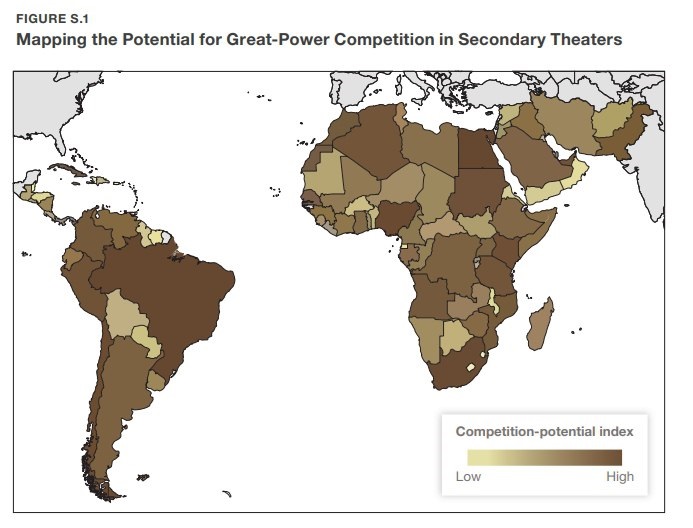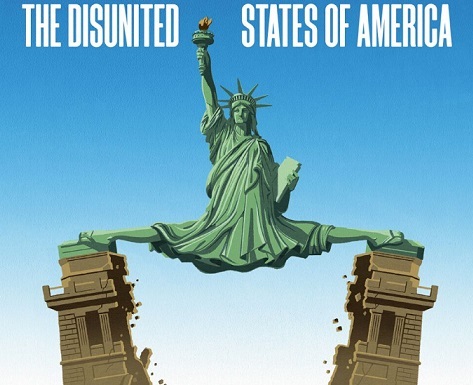
RAND Corp. published a new research “Great-Power Competition and Conflict in the 21st Century Outside the Indo-Pacific and Europe”.
Some main points presented on the Corp. site:
“Under what conditions could the United States expect to become involved in a secondary-theater conflict in which China, Russia, or both are also involved?
What are the implications for the Department of the Air Force, the joint force, and the U.S. government at large?
During the Barack Obama, Donald Trump and Joe Biden administrations, the United States made countering the rise of China in the Indo-Pacific and, to a lesser extent, checking Russian revanchism in Europe core priorities of its national security strategy.
Historically, however, great-power competition and conflict have taken place outside the theaters of core concern to the competing powers.
This report explores where and how the United States, China, and Russia may be competing for influence in these secondary theaters (Africa, the Middle East, and Latin America); where and why competition might turn into conflict; what form that conflict might take; and what implications the findings have for the U.S. government at large, the joint force, and the Department of the Air Force. This research was completed in September 2021, before the February 2022 Russian invasion of Ukraine. The report has not been subsequently revised.
Key Findings:
- Competition in secondary theaters is most likely to focus on the historical power centers.
- China's influence and, to a lesser extent, Russia's influence are increasing in secondary theaters, although the United States remains the dominant military actor for the time being.
- Competition may be a necessary but not sufficient condition for conflict.
- Great-power involvement in conflicts in secondary theaters in the new era of competition may be less driven by zero-sum logic than during the Cold War.
- Future secondary-theater conflicts may involve distinct challenges of deconfliction and behind-the-scenes political contests.
- Conflicts in secondary theaters may not be a particularly useful force-sizing construct.
- Latin America offers several plausible scenarios for conflicts in which the United States could become involved on a side opposing Russia or China.

Recommendations:
- Avoid strategic myopia and secondary-theater blind spots by maintaining a baseline degree of expertise in these theaters.
- Recognize the interconnection between counterterrorism and great-power competition and conflict.
- Strengthen ties to Latin America.
- Work with key allies to economize resources in secondary theaters.
- Maintain access agreements focused on secondary theaters.
- To the extent that the Department of Defense does prepare for conflicts in secondary theaters, invest in mobility and sustainment assets; intelligence, surveillance, and reconnaissance; and special operations forces.
…The United States, after many years of its hegemony, is moving into a mode of global counteraction. This new reality is very disturbing and makes Washington nervous. At the same time, remember that civil conflict is growing in the United States itself, which can nullify the entire foreign policy if supporters of the Democrats and adherents of the Republicans switch from political methods to forceful ones in order to protect their interests and positions. The term ‘Disunited States of America’ has already become a threatening reality.

read more in our Telegram-channel https://t.me/The_International_Affairs

 11:24 02.05.2023 •
11:24 02.05.2023 •






















